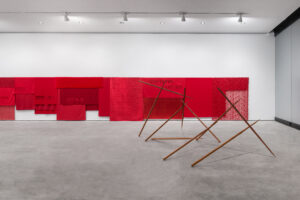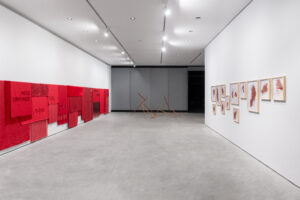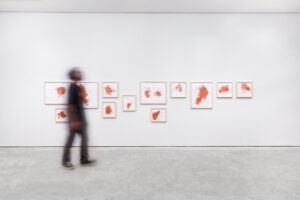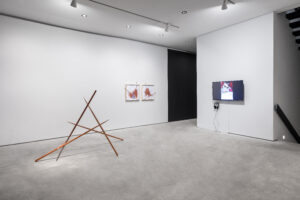north winds don’t move windmills
nov 07_ 2024 - jan 15_ 2025
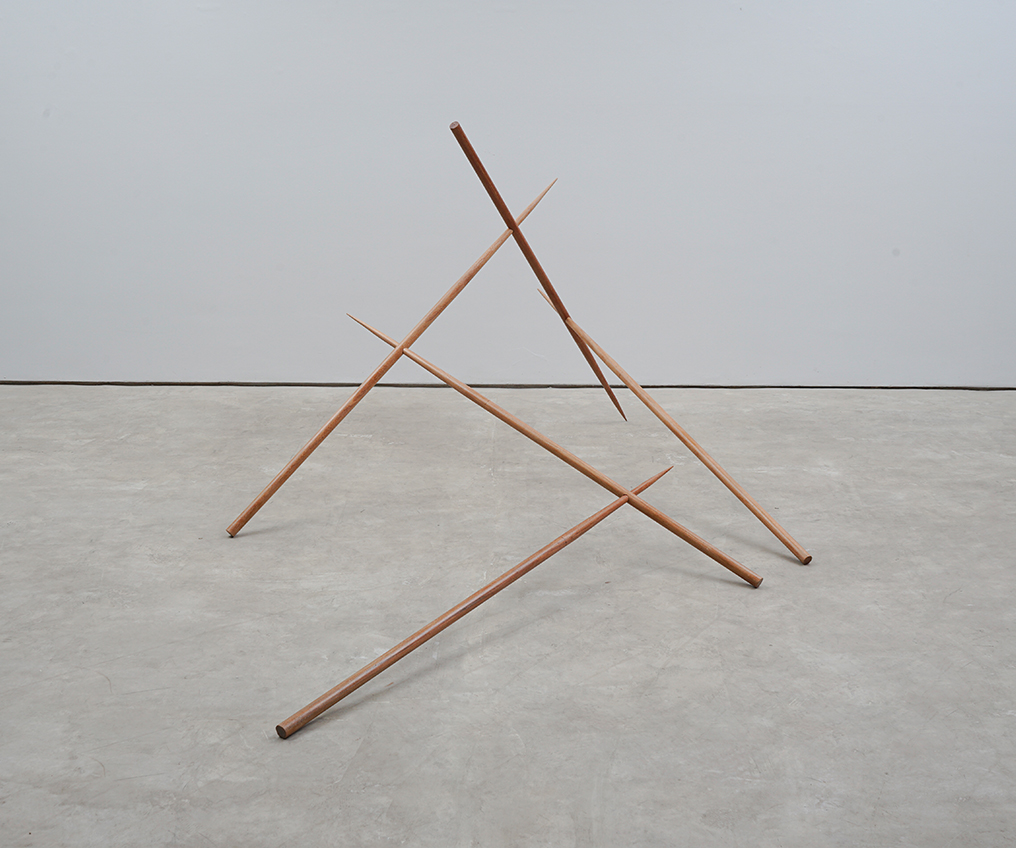
Published for the first time in 1971, Open Veins of Latin America, written by the Uruguayan Eduardo Galeano (1940–2015), is a timeless classic that delves into the power dynamics shaping the particularities of this region. Two years after the book’s release, the band Secos & Molhados records the song “Sangue latino” [“Latin Blood”], which includes the line “The north wind doesn’t set [our] windmills into motion”, a phrase that gives Geórgia Kyriakakis’s exhibition its title. In this context, the term “north wind” is a metaphor for the colonial power of Europe, identified as responsible for the plundering, enslavement, and the genocide of Indigenous peoples in the region, as well as the political oppression of the United States, a driving force behind coups and military dictatorships.
Contrary to what has been ingrained in the collective imagination, Latin America is not merely a physical territory; it pertains, above all, to the systemic processes of colonization and exploitation. For more than five centuries, supplying the North with commodities has been an imposition on Latin American societies (as well as on other nations in the Global South). This is the subject addressed by Galeano’s book, Secos & Molhados’ song, and Geórgia Kyriakakis’ exhibition, each through its own distinct language
Driven by an extractive economy dedicated to wrenching metals from the earth’s depths, burning forests, planting vast monoculture estates, and producing more cattle than humans, Latin America has been methodically bled dry for the benefit of the owners of capital. With a visuality akin to a bloodshed, the installation VEIAS ABERTAS [Open Veins] occupies the gallery’s main wall, juxtaposing fabrics of various materialities and shades of red with lines from the song — “my life, my dead, my crooked paths, my Latin blood, my captive soul.”
Blood as a synonym for exploitation is also symbolized by the presence of copper, whether in bars connected to latex tourniquets or in the form of drawings/paintings on paper. Making direct reference to one of the world’s largest open-pit mines, located in Chuquicamata, Chile, the artist metaphorically evokes the blood, tears, and sweat shed in the pursuit of the mineral. Once again, we see the exploitation of the Earth, viewed as a natural resource to be consumed.
Galeano used the expression “copper teeth over Chile” to describe the exploitation of the mineral by U.S. companies—in 2003, all residents of Chuquicamata were relocated to the nearby city of Calama due to the high levels of respiratory contamination. The copper spear used in these art pieces, which is also replicated in wood, references another line from the song: “I broke the spear, cast it into the sky, a shout, a rant.”
In the series named after the Chilean mine, the drawings simulate the gesture of “washing one’s hands,” both as a matter of public health and as a popular expression for avoiding responsibility. The gesture may represent the hand of a worker who has had direct contact with mining, whether through air contamination or manual labor in the mine, as well as the hand of the public authorities acting in favor of capital. The presence of this collective act already hints at what can be found on the upper floor of the exhibition.
On that floor, Kyriakakis invited four other artists to collaborate on the exhibition, three of whom were her students in the Visual Arts course at FAAP [Fundação Armando Alvares Penteado], including the one who writes this text. This unveils another layer: Geórgia Kyriakakis as a teacher. From here, her artwork can be read in dialogue with education, which in turn connects to the domestic and maternal—both historically invisible in the conception of labor. The commissioning of new works by Aline Langendonck, Carla Chaim, Isis Gasparini, and Vânia Medeiros adds to the desire to produce collectively and to activate mechanisms that bring to light the labor force of the gallery’s own team.
What emerges is an exhibition that challenges power structures, systems of labor, and productivity, while also engaging with a past that remains very much present, particularly with regard to Brazil’s future. It serves as a reminder that the open veins of Latin America have yet to heal.
Paula Borghi
São Paulo, October 2024
exhibitions images
